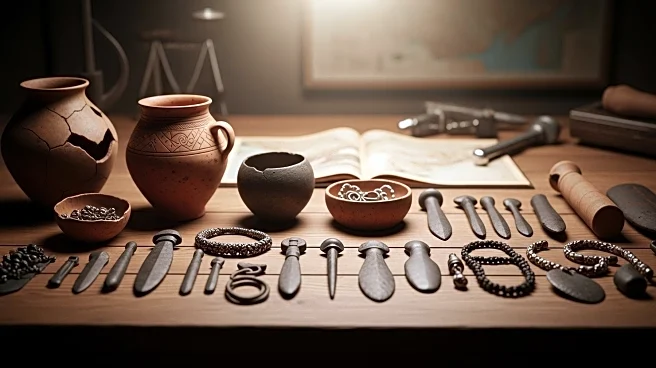What is the story about?
What's Happening?
A recent study has unveiled significant findings at the Kvemo Bolnisi site in Georgia, suggesting that copper smelters may have played a crucial role in the development of iron metallurgy. The site, dating back 3,000 years, was initially thought to be an early iron smelting location due to the presence of iron oxide minerals. However, researchers have discovered that the workers were actually smelting copper, using iron oxide to enhance the process. This supports the theory that ancient copper metalworkers experimented with iron-bearing materials, paving the way for iron smelting. The study, published in the Journal of Archaeological Science, highlights the intentional use of iron in copper smelting, offering new insights into the origins of iron production.
Why It's Important?
The findings at Kvemo Bolnisi are significant as they challenge previous assumptions about the origins of iron metallurgy. By demonstrating that copper smelters were experimenting with iron-rich materials, the study suggests a more complex evolution of metalworking techniques. This has implications for understanding the technological advancements that led to the widespread use of iron, which played a pivotal role in historical developments such as the rise of powerful armies and the Industrial Revolution. The research also underscores the importance of interdisciplinary approaches, combining archaeology and materials science to uncover historical processes.
What's Next?
Further research is likely to focus on exploring other ancient sites to validate the theory that copper smelters contributed to the development of iron metallurgy. Archaeologists may employ modern techniques such as high-resolution 3D scanning to analyze artifacts without damaging them, potentially uncovering more evidence of early experimentation with iron. These studies could reshape our understanding of technological progress in ancient civilizations and inform current practices in metallurgy.
Beyond the Headlines
The discovery at Kvemo Bolnisi highlights the role of experimentation and innovation in ancient societies. It suggests that the transition from bronze to iron was not a straightforward process but involved significant trial and error. This challenges the narrative of linear technological progress and emphasizes the complexity of human ingenuity. The research also raises questions about the cultural and economic factors that drove ancient metalworkers to experiment with new materials.
AI Generated Content
Do you find this article useful?














